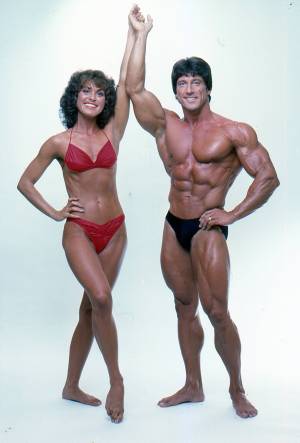How Can I Help You?

On my website is the statement: “Got an interesting bodybuilding question you’d like to ask? Frank will tell you how to find your answers.” Over the years I’ve received many questions, most of which are beyond the scope of what I can answer in an email. One of my favorites starts with something like this: “I have a structure similar to yours, please give a program that will make me look like you.” Then they go on to list their measurements, height, weight, diet, and workout routine. But the most important factor is missing. I do not know what this person looks like; a photo would have been helpful. In any case I am not ready to do a detailed analysis of what this person should do, mainly because I don’t know. I not only need to see what they look like, I have to see how they train—how they do all the movements. This is something I can only do in person. Measurements are a moot point and so is percentage of body fat. They are only numbers and in themselves mean nothing.
I’m often asked my measurements to which I reply “I never took measurements, only photos since judging in the competitions I entered was always based entirely on appearance.” I never had my body fat composition measured because it was never a consideration in determining who the winner of a competition was. I learned that numbers don’t mean much when it comes to accessing who looks the best. I never cared about them and I don’t focus on them with my clients either. When I work with someone the first thing I do is to photograph them and then show them the photos. In order to improve, one must first become aware of exactly what they look like. Awareness is a prerequisite for change. It’s all about body awareness.
Numbers have nothing to do with it. Getting hung up on numbers is analogous to not seeing the forest for the trees. If numbers are useful at all it’s only when they are correlated with photos. I’ve learned not to rely on them at all when it comes to ascertaining my degree of physical development. Photos are the most useful measurement of appearance we can have. They are essential to the visualization process. You focus on what you look like as you see in the photos and then imagine your body changing to look the way you desire. As you continue to practice body visualization your body will gradually begin changing to eventually resemble the look you want.
Fact is nobody has complete body awareness. It takes more than just looking in the mirror—you must learn to see yourself the way other people do. You might say there are two kinds of people in the world in this respect: those who look better than the image they see in the mirror (typically this is what people with low self-esteem experience) and those who look worse than what the mirror reveals to them (those with big egos fall into this category). Do you realize that the only way you’ve ever seen yourself is backwards – this is what you see in the mirror–And that there are parts of your body you can’t see? (your whole back side – and this is why people’s backs and hamstrings are usually less developed than their fronts).
Furthermore, the way you see yourself in the mirror is a product of your belief system. You see what you expect to see. An anorexic person actually sees a fat person in the mirror because this is how they believe themselves to be — it’s a product of their prior conditioning. Bodybuilding champions are no different either. Once I asked one of my former competitors who was competing what kind of shape he was in for his show. “I’m in the best shape of my life” was the answer. “I’m bigger, stronger, and weigh more”. But he didn’t look better. The extra bulk obscured the definition he had the previous year.” He’d been doing the Mentzer system of static contractions where you do the first rep let’s say on leg extension with an enormously heavy weight, hold it at the top until it falls down on its own as you fight against it, and then do an addition rep with the help of your training partner. Not much movement, just holding the contraction for long periods. From training this way he had developed heavy quadriceps above the knee but not up higher on his thighs. The shape of his thighs (and definition) was ruined. But he felt strong.
So there’s really very little accurate information I can give people without the above knowledge. Advice I give in this case is what might be called generic, i.e. the same for everybody. But I do tell them where they might look to find the information they seek. I suggest they peruse my literature, find a recommended program, take photos every 6 weeks, keep track of their training by writing everything in a journal (including diet) and then correlate what they are doing to how they look. If they are improving then keep practicing what they have been doing, if not improving try something else. Eventually one can become a genius in retrospect.

